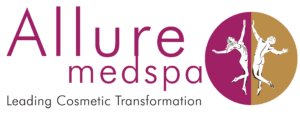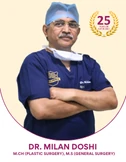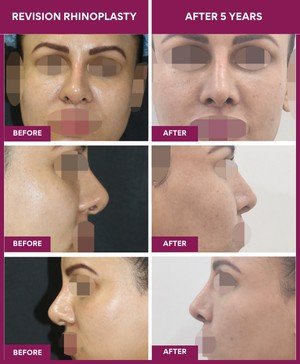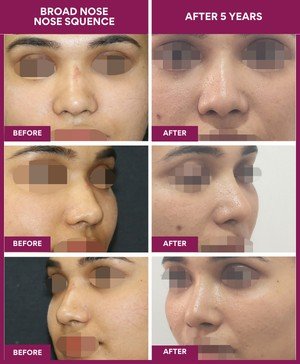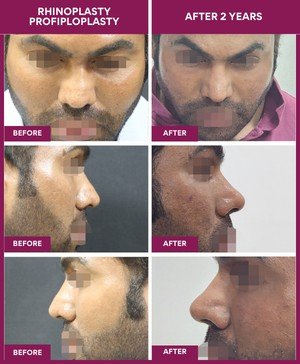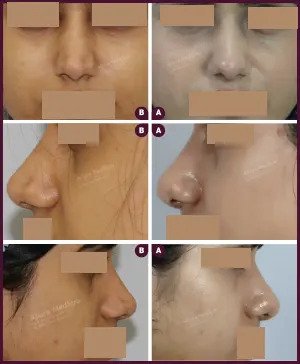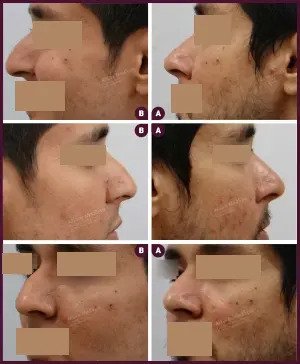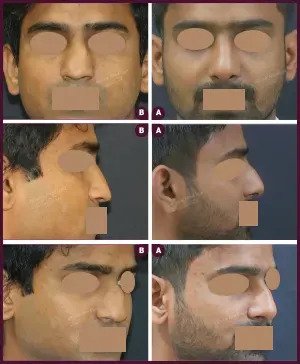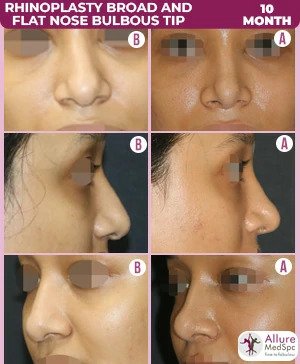Rhinoplasty: Procedure, Side-effects, & Cost for a Smooth Recovery
Feeling Self-Conscious About Your Nose?
- Do you often find yourself staring at your nose in the mirror, wishing it were more defined, symmetrical, or proportional to your face?
- Do you avoid photos, side profiles, or close-ups because of a hump, droopy tip, or crooked shape?
- Is your nasal structure affecting not just your appearance, but also your ability to breathe comfortably?
When your nose doesn’t match the harmony of your facial features—or makes breathing a challenge—it can impact more than just your looks. It can influence your self-esteem, your daily comfort, and even how you carry yourself in social or professional situations.
Thankfully, there’s a proven solution.
Rhinoplasty Surgery—commonly known as a “nose job”—is a transformative procedure that reshapes, refines, and restores both the appearance and function of the nose. Whether you’re correcting a congenital deformity, fixing a previous surgery, or simply enhancing your profile, rhinoplasty offers a powerful blend of aesthetic beauty and medical precision.
Global & Indian Trends (ISAPS 2023):
- 1,148,559 rhinoplasty surgeries were performed worldwide in 2023 – a 21.6% increase from 2022
- India ranks #3 globally, with 71,256 rhinoplasty procedures (6.2% of all global cases)
- Rhinoplasty is now the second most common cosmetic surgery in India
Source: ISAPS Global Survey 2023
Let’s explore how rhinoplasty works, what types are available, and how to choose the right surgeon for results that truly enhance your face—and your confidence.
Other Links: Non Surgical Rhinoplasty Surgery | Rhinoplasty Before After Images | Rhinoplasty Cost
What Is Rhinoplasty Surgery?
Rhinoplasty is a nose surgery that reshapes or reconstructs the nose to enhance facial appearance or restore nasal function and breathing.
Two Types:
- Reconstructive Rhinoplasty: Restores nasal structure and function (e.g., post-trauma or birth defects).
- Cosmetic Rhinoplasty: Enhances nose shape, size, or symmetry for aesthetic goals.
Synonyms for Rhinoplasty:
Nose Job Surgery, Rhinoplasty Surgery, Nose Shaping Surgery, Nose Reshaping Surgery, Septorhinoplasty
“Do you know that each Rhinoplasty surgery is different, so is the cost?”
Rhinoplasty/ Nose Job Surgery Results: Before & After
“Liked the results? Let's plan yours.”
Rhinoplasty Surgery Testimonials: Celebrities Patient
Awarded by Google.com
Rating: 4.7
Reviews: 485+
Awarded by WhatClinic.com
Rating: 4.8
Reviews: 119+
Awarded by Realself
Rating: 4.9
Reviews:453+
Awarded by Facebook
Rating: 4.6
Reviews:105+
“Inspired by their journey? Start yours”
Video: Best Rhinoplasty Surgeon explain nose reshape procedure
Dr Milan Doshi is describing the Rhinoplasty Surgery in detail with benefits, techniques, recovery, result, risk and complecations
“Understood the process? Let’s talk next steps.”
Interesting Facts About Rhinoplasty Surgery?
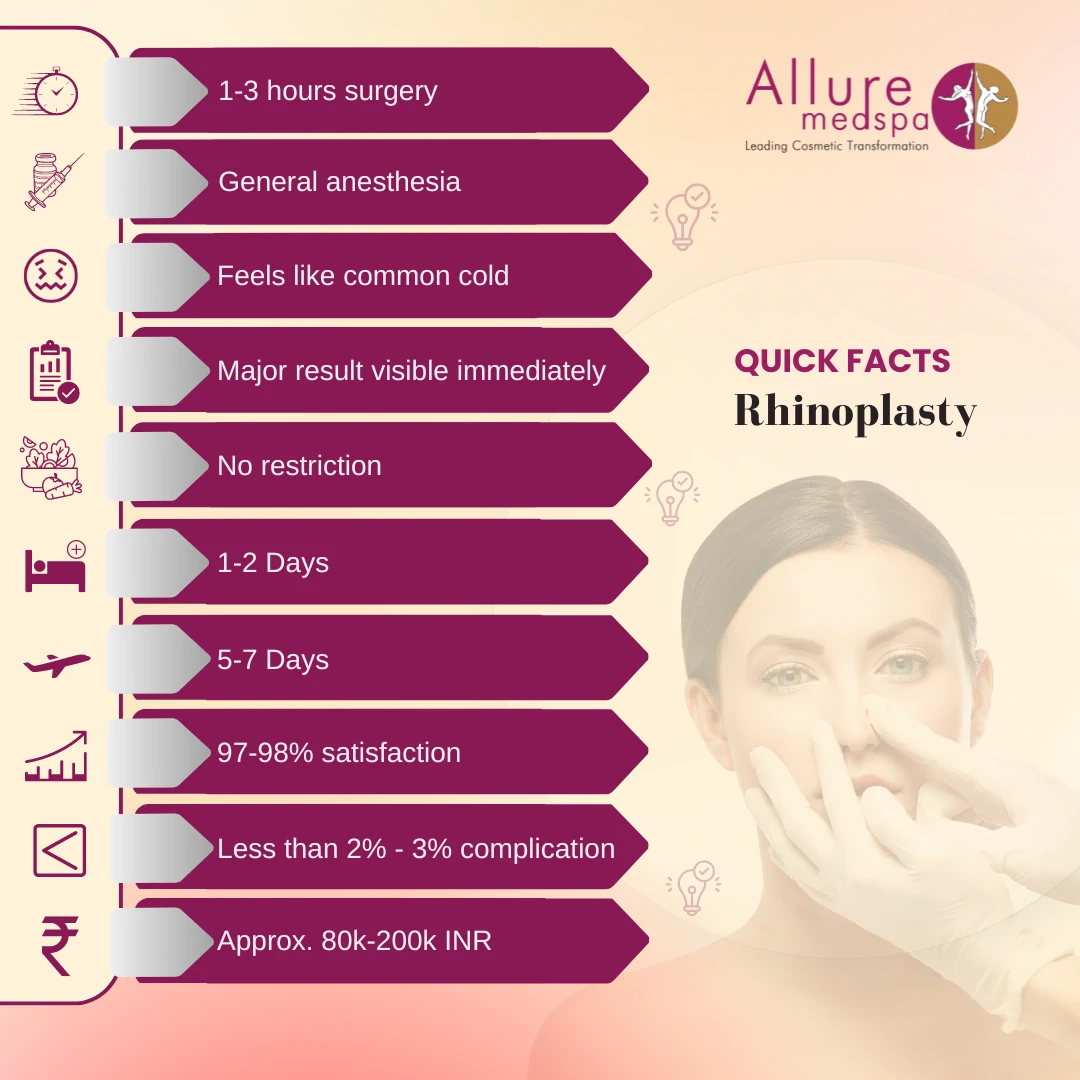
| Time Required | 1–3 Hours |
| Anesthesia | General Anesthesia |
| Pain Level | Feels like common cold |
| Hospital Stay | 1–2 Days |
| Flyback | 5–7 Days |
| Success Rate | 97% to 98% |
| Result | Major improvement immediately; final result in 8–12 months |
| Diet | No Restrictions |
| Complication Rate | Less than 2–3% |
| Rhinoplasty Cost | INR 80,000 to 2,00,000 Approx. |
“Know the basics? Let’s go deeper.”
What Are the Benefits of Rhinoplasty Surgery?
Rhinoplasty, also known as a nose job, offers both cosmetic and functional benefits—improving nasal shape, breathing, and facial harmony.
- Improves nasal shape: Corrects bumps, drooping tip, wide bridge, or asymmetry.
- Fixes nasal deformities: Addresses congenital or trauma-induced nose issues.
- Enhances facial balance: Brings proportion between the nose and other facial features.
- Improves breathing: Corrects structural issues like a deviated septum.
- Boosts self-confidence: Feel more confident in personal and social interactions.
- Increases social acceptance: Improved appearance often leads to better social ease.
- Career advantage: Especially in professions where appearance matters.
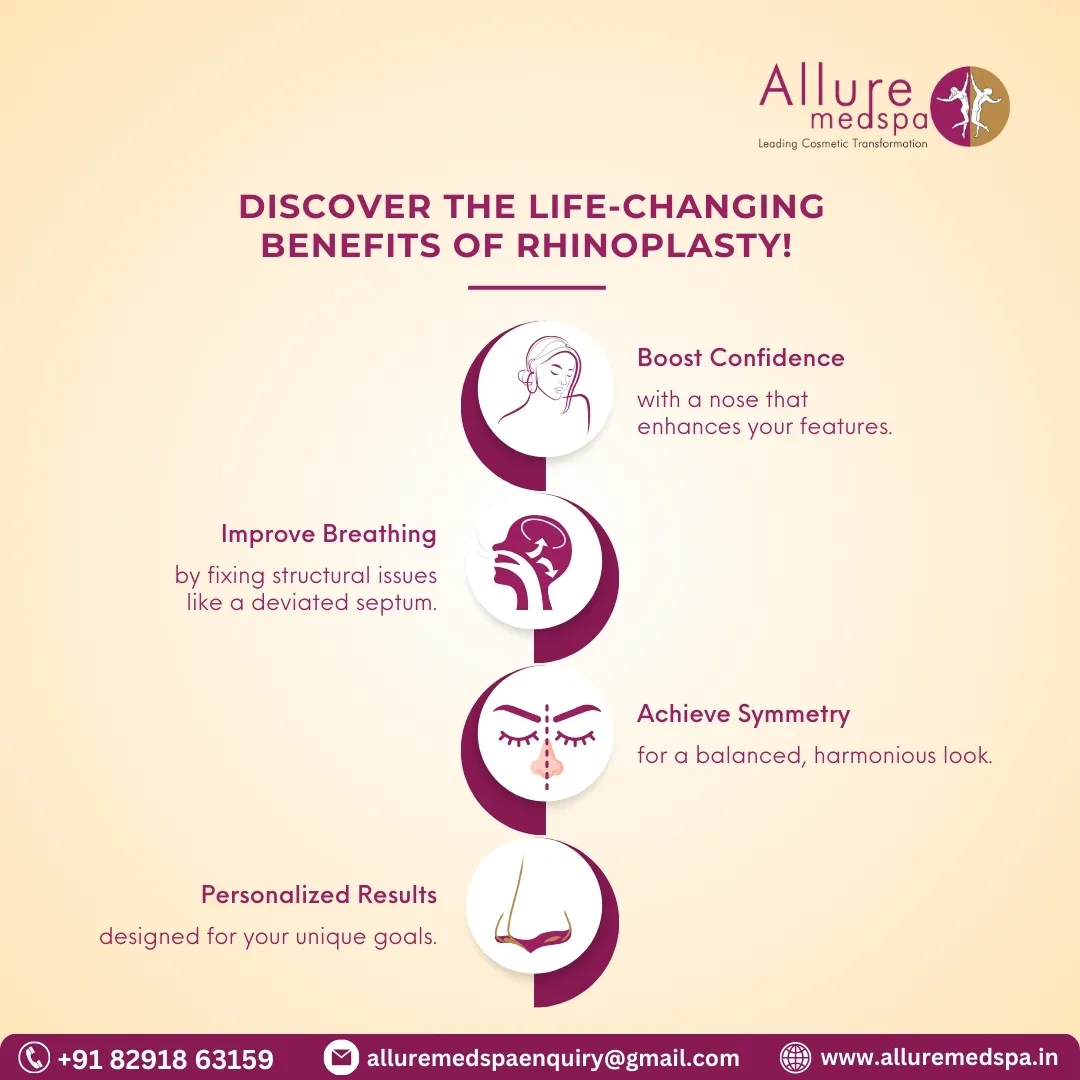
Which Nasal Deformities Can Be Corrected with Rhinoplasty Surgery?
Rhinoplasty surgery can correct a wide range of nasal deformities—from size and shape issues to structural problems like deviated septum and trauma-related defects.
- Size-related: Small nose, big nose correction
- Length-related: Short nose or long nose reshaping
- Tip deformities: Bulbous, boxy, or pinched tip; adjust tip projection and rotation (e.g., piggy nose, droopy tip)
- Dorsal issues: Dorsal hump reduction, saddle nose correction
- Columella problems: Hanging or retruded columella correction
- Alar concerns: Broad base, hanging alar margin reshaping
- Width corrections: Broad nose or wide mid-vault narrowing
- Complex deformities: Twisted, crooked, or deviated nose corrections
- Birth defects: Certain congenital nasal deformities
- Trauma-related: Nose reshaping after injury or sports trauma
- Functional correction: Repair of a deviated septum for better breathing
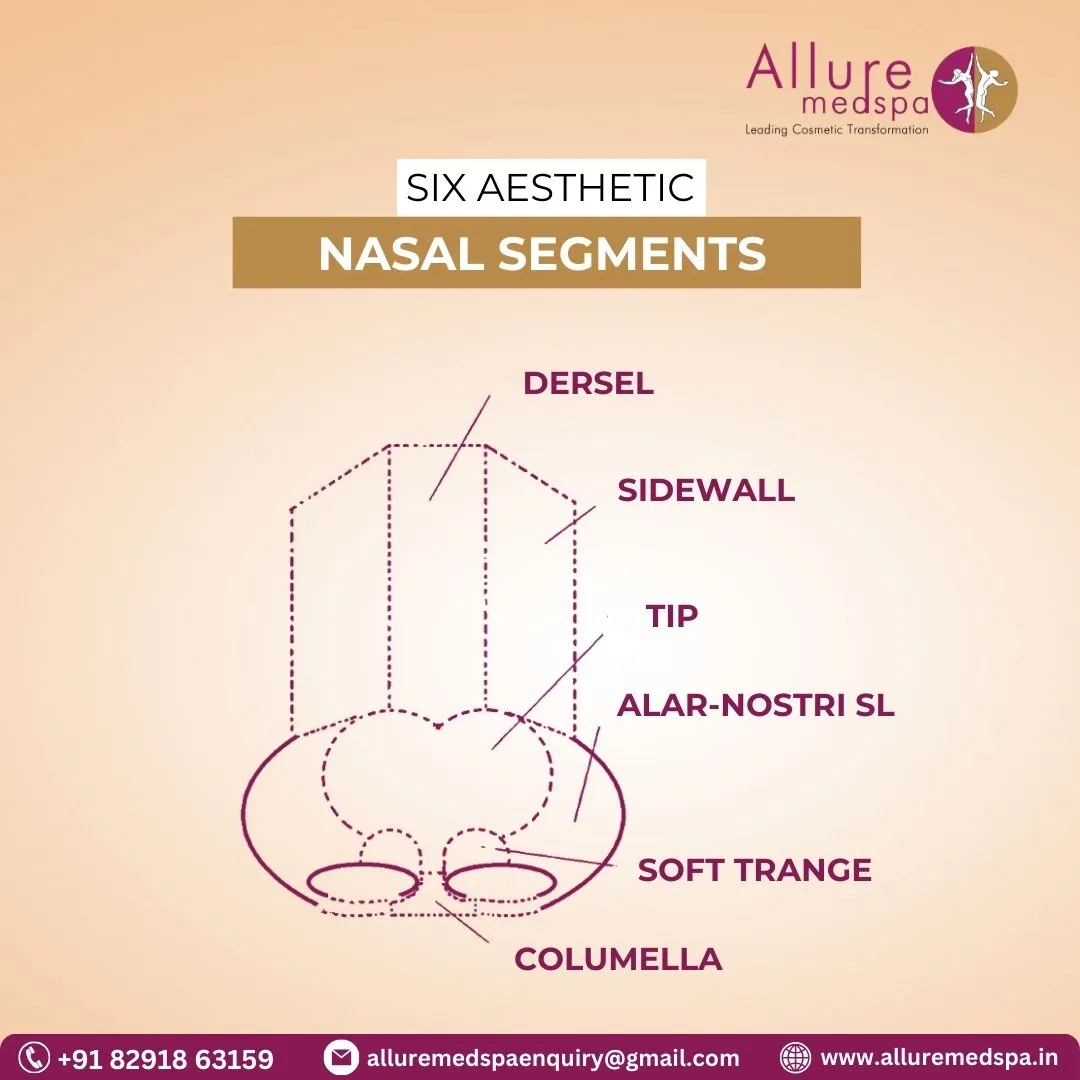
What Are the Six Aesthetic Nasal Segments in Nose Job Surgery?
Rhinoplasty is performed with reference to six aesthetic nasal segments to ensure precision and harmony in outcomes:
- The tip segment
- The columellar segment
- The soft-tissue triangle segment
- The alar segments
- The dorsal nasal segment
- The lateral nasal-wall segments
Based on these zones, expert surgeons like Dr. Milan Doshi plan minimal yet effective corrections to restore natural shape and function.
Am I the Right Candidate for Rhinoplasty or Nose Job Surgery?
If you’re healthy, emotionally prepared, and seeking to improve nose shape, proportion, or function, you may be an ideal candidate for rhinoplasty.
- Age criteria: Girls above 16 and boys above 18 years
- Physical health: You must be medically fit for surgery
- Mental readiness: Emotionally prepared for the process and recovery
- Realistic goals: You understand the benefits and limits of the procedure
- Cosmetic reasons: Nose is too large, too small, crooked, or lacks proportion with facial features
- Functional issues: Difficulty breathing due to structural issues like deviated septum
- Snoring problems: Rhinoplasty can improve sleep-related breathing concerns
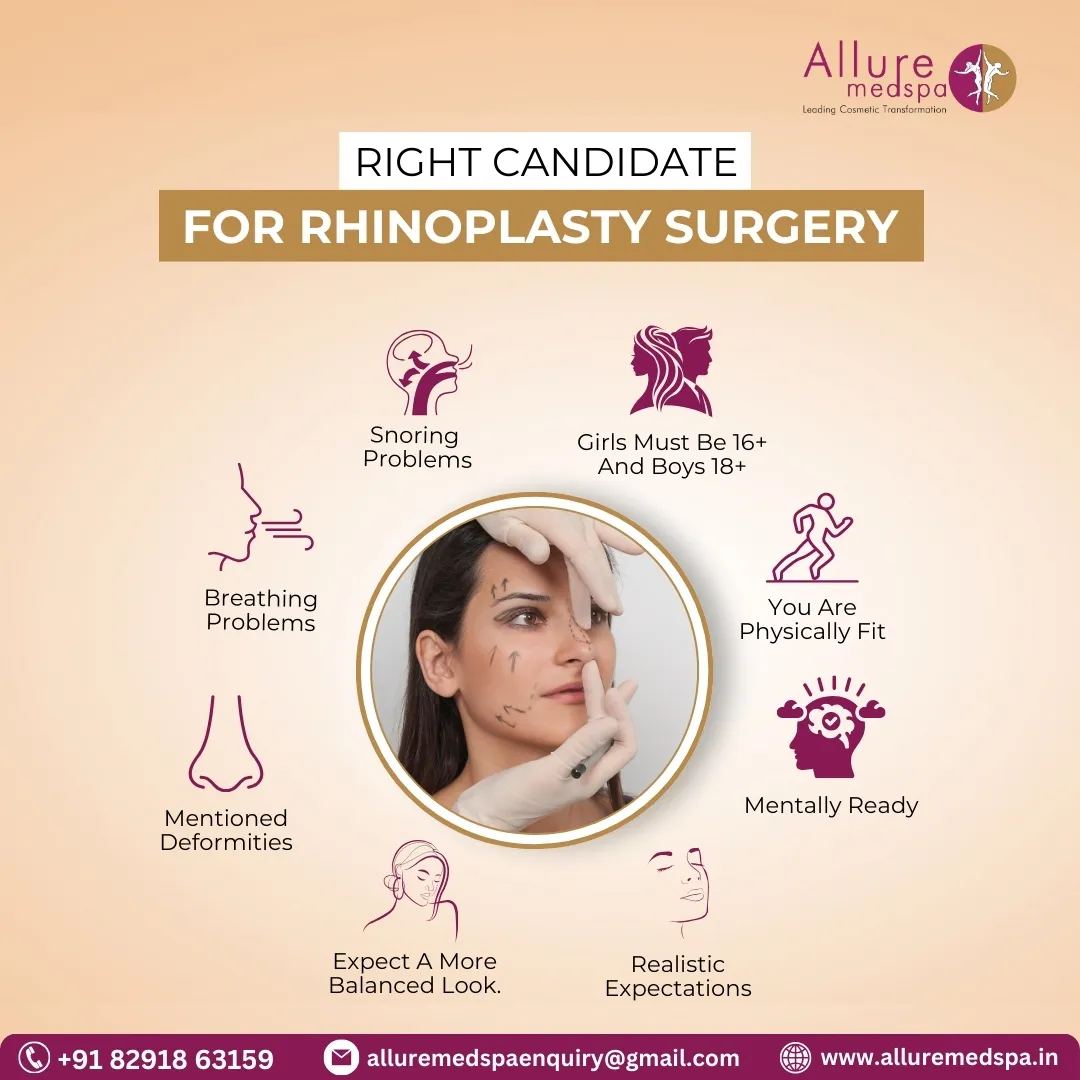
What Are the Limitations of Rhinoplasty Surgery?
Rhinoplasty improves nasal aesthetics and function, but it has limits—results may vary, and perfection isn’t guaranteed due to anatomy and healing.
- Complex procedure: Rhinoplasty demands high surgical skill and artistic judgment—choose an experienced cosmetic surgeon.
- Improvement, not perfection: Every nose has unique tissue behavior. Realistic expectations are key for satisfaction.
- Functional safety first: Reshaping is limited by the need to preserve nasal airflow and breathing function.
- Cartilage memory: Cartilage can shift over time, affecting the final shape post-surgery despite precise techniques.
- Revision rate: 1–5% of patients may require revision rhinoplasty due to healing variations or aesthetic refinements.
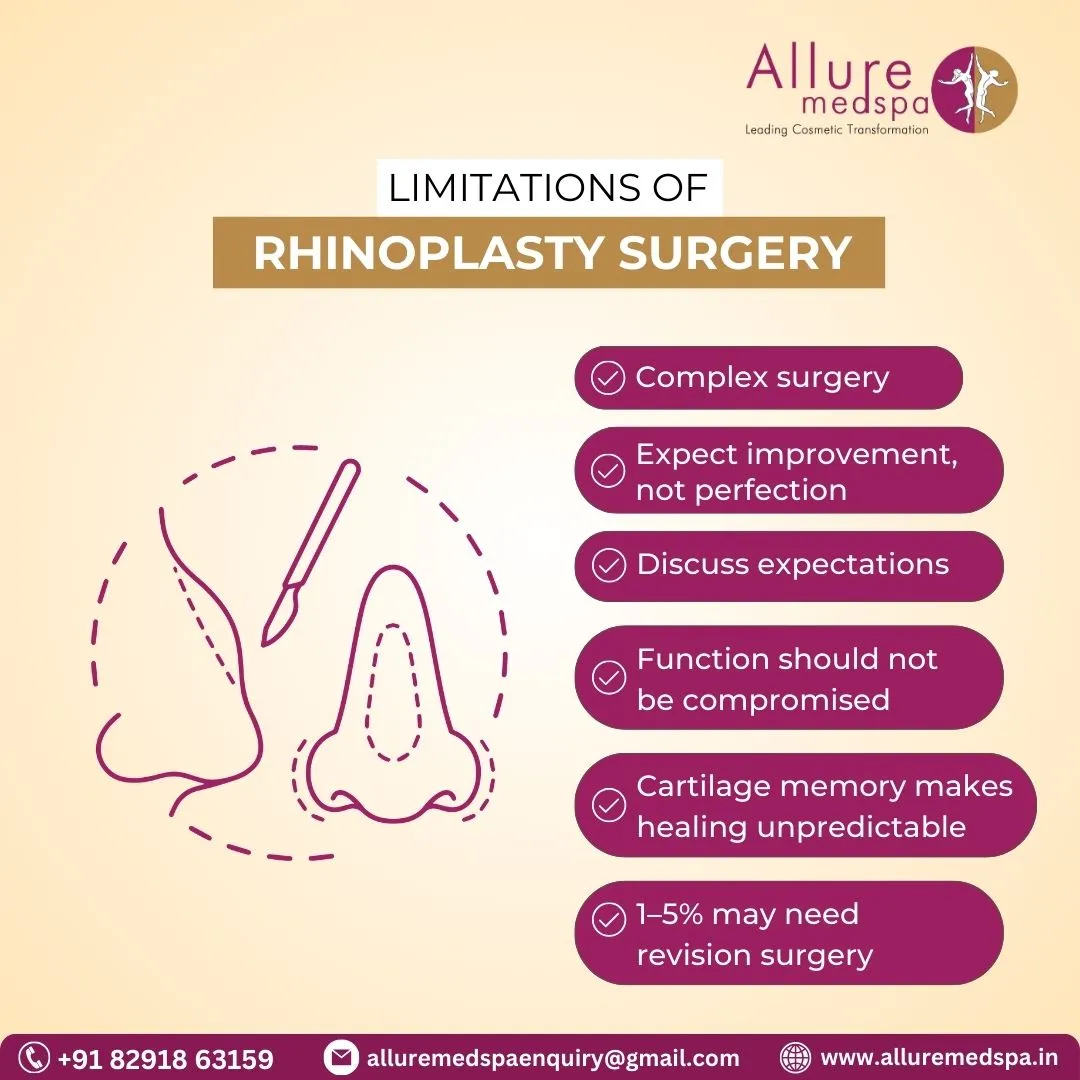
Why Should You Have a Consultation Before Rhinoplasty Surgery?
A pre-surgery rhinoplasty consultation helps create a personalized plan, clarify achievable results, assess safety, and estimate cost—based on your unique case.
- Customized Surgical Planning: Your surgeon will examine your nose shape, skin quality, breathing issues, and facial harmony to tailor a plan.
- Clarifies Safety & Suitability: Know whether rhinoplasty is right and safe for you, based on health, medical history, lifestyle, and expectations.
- Informed Expectations: Get realistic insights about achievable results, risks, limitations, and recovery timelines—directly from your surgeon.
- Visual Results: View edited previews and before–after photos of previous patients to better understand potential outcomes.
- Transparent Costing: Learn the actual rhinoplasty surgery cost in Mumbai, including pre-op tests and post-op care.
- Comfort & Trust Building: Evaluate your confidence level with the surgeon—crucial for a smooth journey and peace of mind.
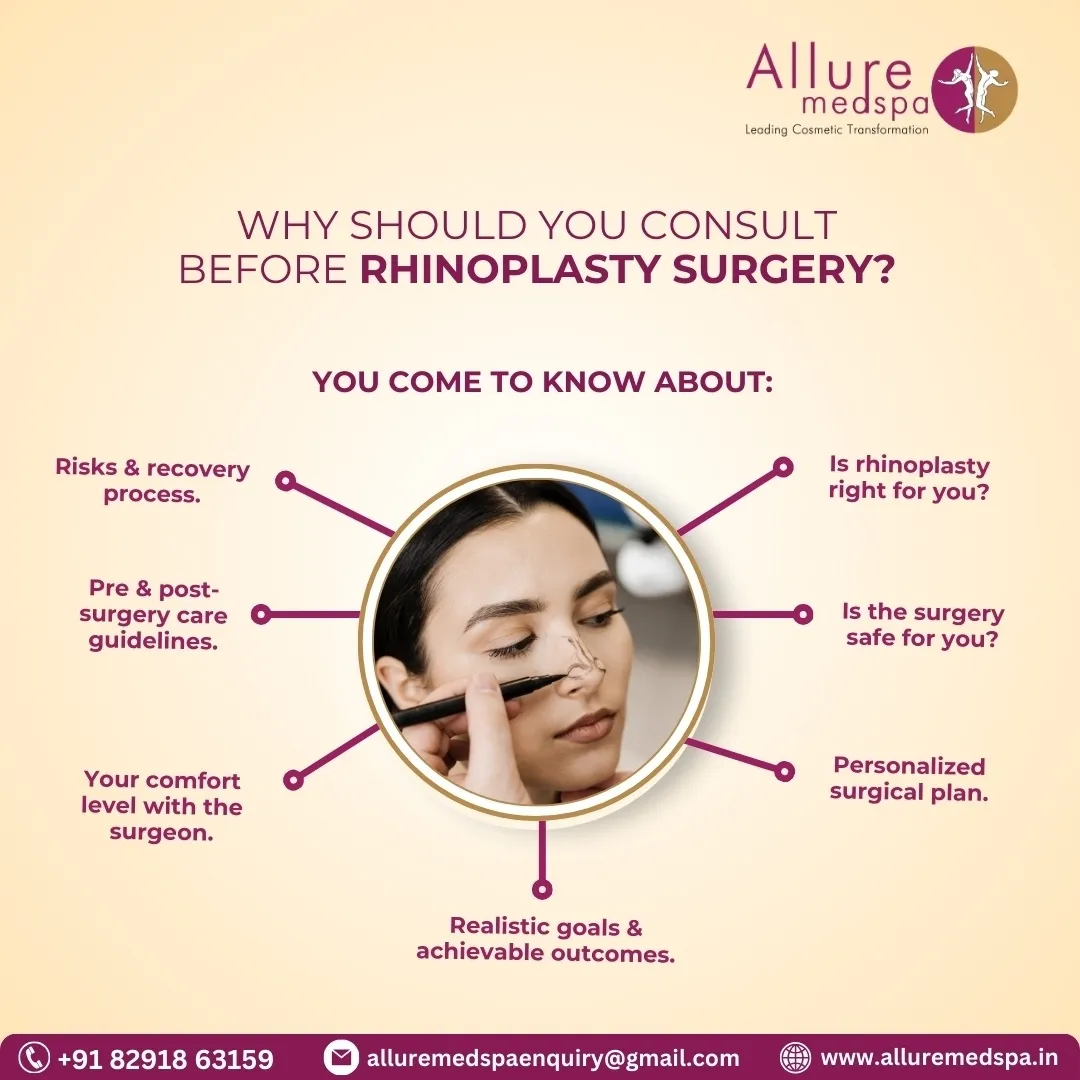
Checklist Before Your Rhinoplasty Consultation:
- Your nose concerns and desired results (bring reference photos if needed)
- Any allergies, previous surgeries, nasal injuries, or breathing problems
- History of medications, supplements, smoking, or alcohol use
- Photos of your current nose (if opting for online consultation)
What the Best Rhinoplasty Surgeon Will Evaluate:
- Nasal structure: bone, cartilage, skin thickness, and existing deformity
- Facial harmony in relation to age, sex, and ethnicity
- Breathing concerns or septal deviations
- Overall health status and surgical fitness
Benefits of Online Consultation at Allure Medspa:
- Skip travel—consult from the comfort of home
- Save time and receive expert analysis based on your shared photos
- Dr. Milan Doshi will provide a realistic visualization of results using your photos
What Are the Different Techniques Used in Rhinoplasty Surgery?
Rhinoplasty can be performed using advanced techniques like open, closed, preservation, structural, or Piezo (ultrasonic) methods, tailored to your needs.
- Open Rhinoplasty: Offers clear visibility of nasal structures via a small external incision. Ideal for complex corrections. May result in slightly longer recovery.
- Closed Rhinoplasty: Performed entirely inside the nostrils. No external scars, faster healing, and minimal swelling—best for minor reshaping.
- Preservation Rhinoplasty: Minimally invasive technique preserving cartilage and nasal support for natural look and quicker recovery.
- Structural Rhinoplasty: Uses strong cartilage grafts to support or reshape the nasal framework. Ensures long-lasting structural integrity.
- Piezo Rhinoplasty (Ultrasonic): Precision bone sculpting using ultrasonic energy with minimal trauma, bruising, or swelling. Leads to faster recovery and higher satisfaction.
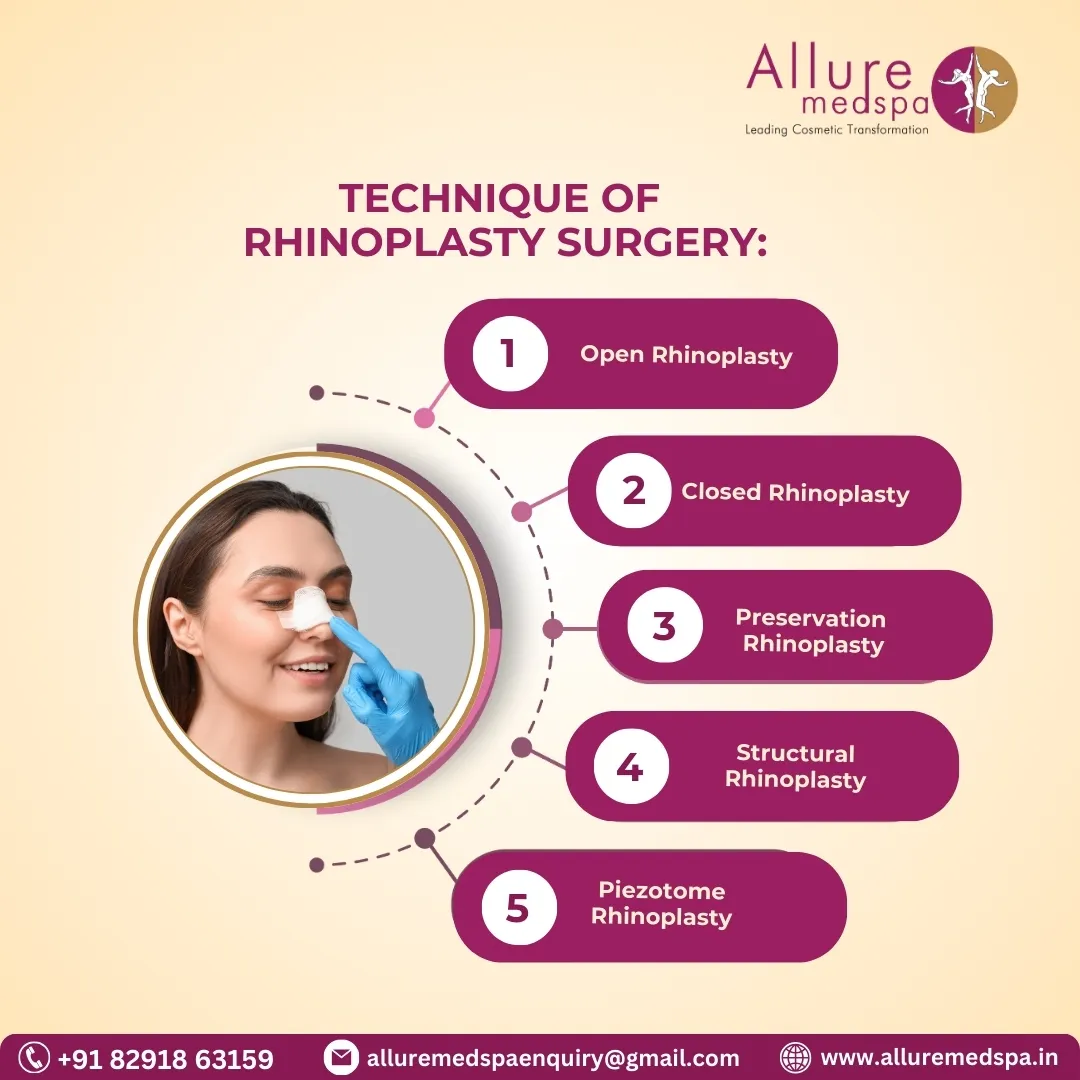
Benefits of Piezo Rhinoplasty:
- High-precision bone reshaping with minimal soft tissue trauma
- Less bruising, swelling, and internal scarring
- Speeds up recovery and reduces revision rates
- Ideal for bony humps, wide nasal bridges, or asymmetry
- Used in both cosmetic and preservation rhinoplasty approaches
Who Benefits Most from Piezo Rhinoplasty?
Anyone needing bone contouring—such as correction of dorsal hump, bone deviations, or broad nasal bridges—can benefit. Typically done via open approach for precision.
Why Don’t All Surgeons Use Piezo Rhinoplasty?
- Requires advanced training and modification of traditional techniques
- High equipment cost compared to traditional tools
- Not all centers are equipped with Piezo technology
Watch How Piezo Works: Piezo Rhinoplasty Surgery Video
What Are the Different Types of Rhinoplasty Surgery?
Rhinoplasty surgery is categorized based on the number of procedures, ethnicity, and purpose—such as cosmetic, functional, or reconstructive needs.
A. Based on Number of Surgeries
- Primary Rhinoplasty: First-time nose reshaping to correct cosmetic or structural issues.
- Revision (Secondary) Rhinoplasty: Performed when the initial surgery didn’t meet expectations or caused complications.
Common Reasons for Revision:
- Nasal airway obstruction or breathing issues
- Pinched or droopy tip
- Overdone or asymmetrical nose
- Collapsed nasal cartilage or nasal bones
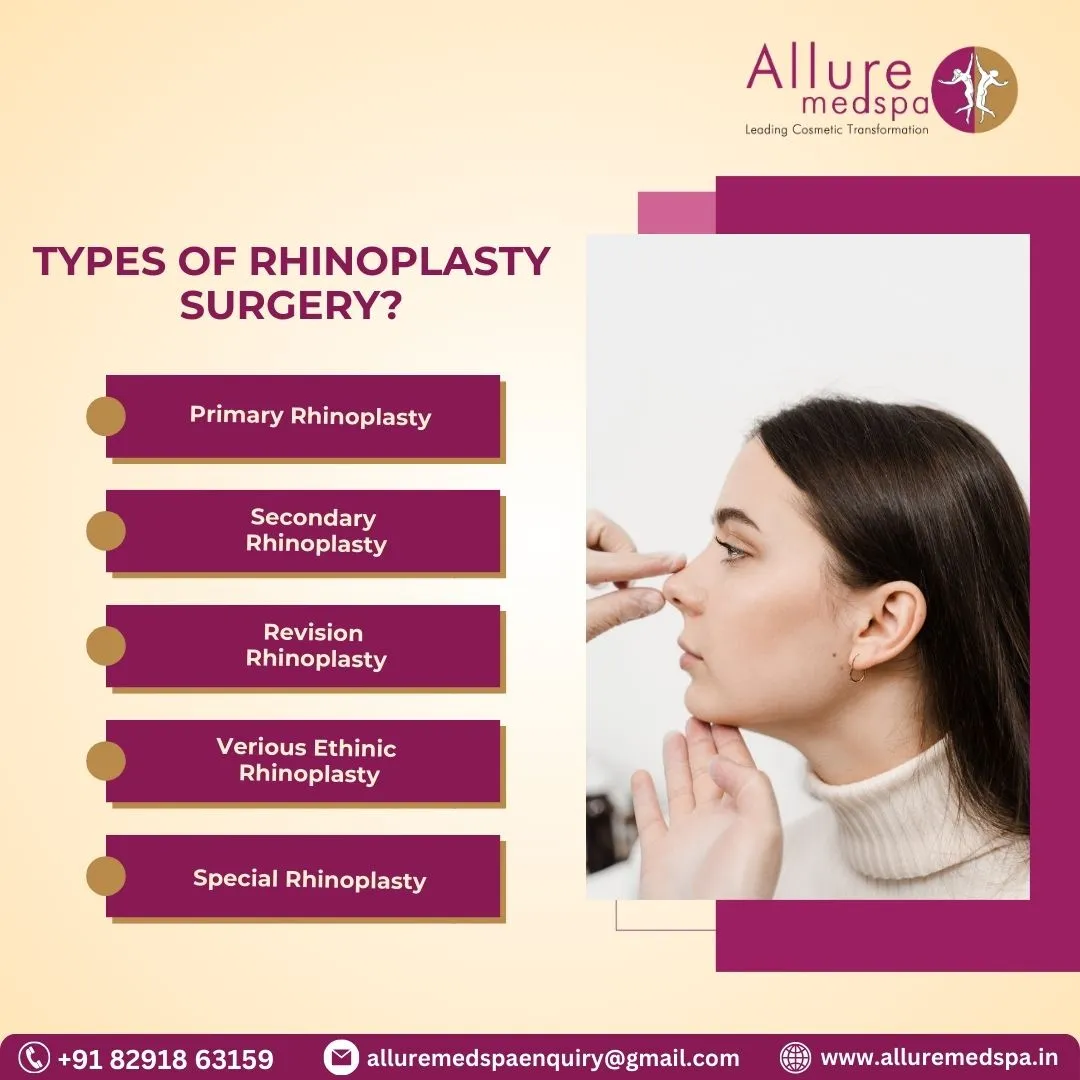
B. Ethnic Rhinoplasty Types
Ethnic rhinoplasty enhances the nose while respecting individual cultural and anatomical features.
- Caucasian Rhinoplasty: Often involves hump reduction and refining a narrow nose (leptorrhine type).
- Hispanic Rhinoplasty: Balances broad tips or high bridges, varies between Castilian and Mestizo subtypes.
- African Rhinoplasty: Improves wide, flat nasal features with thicker skin and under-projected tips (platyrrhine type).
- Asian Rhinoplasty: Enhances low dorsum, broad and blunt tip, typically with cartilage grafting (subplatyrrhine type).
- Middle Eastern Rhinoplasty: Corrects dorsal hump, wide nasal base, and droopy or over-projected tips.
C. Special Purpose Rhinoplasty
- Septorhinoplasty: Combines nasal reshaping with correction of deviated septum for better breathing.
- Rejuvenation Rhinoplasty: Targets age-related nasal sagging, cartilage collapse, and nasal skin thickening to restore a youthful look.
Did You Know? Every type of rhinoplasty—from ethnic to revision—requires a tailored approach for the best aesthetic and functional outcome.
How Is Rhinoplasty Surgery Performed Step by Step?
Rhinoplasty is a tailor-made nose reshaping procedure performed under general anesthesia in an OT, using open or closed techniques for safe, lasting results.
A. Preoperative Preparation
- Complete blood tests, nasal CT scan, and medical fitness evaluation
- Control of underlying conditions like diabetes, hypertension
- Stop smoking, alcohol, and over-the-counter supplements
- Detailed surgery instructions shared by the rhinoplasty team
B. On Admission at the Cosmetic Surgery Center
- Report recent illnesses (cold, fever, infections)
- Inform about current medications, past surgeries, or allergies
- Medical and family history assessed to avoid risk factors
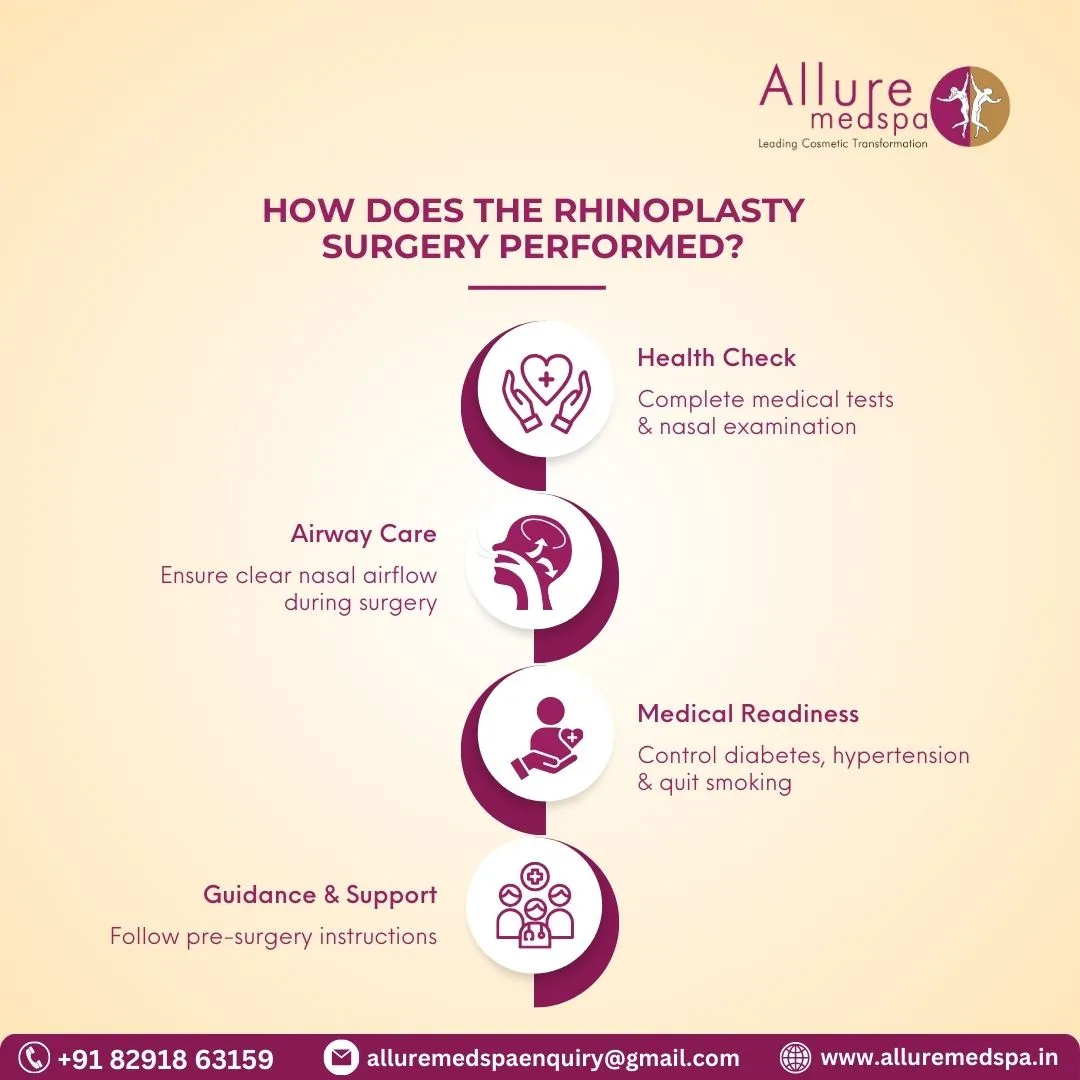
1. Before Entering the OT
- Surgeon discusses nose shape goals and marks surgical area
- Anaesthesiologist evaluates general fitness
- Pre-op medications are administered
2. In the Operation Theater
- Anesthesia: General anesthesia for extensive reshaping; local for minor corrections
- Duration: 1.5 to 3 hours
- Infiltration: Local anesthetic + adrenaline used to reduce bleeding and scarring
- Technique: Open or closed rhinoplasty approach, depending on complexity
- Structural Changes: Grafts, suture shaping, cartilage excision, osteotomy, septoplasty if required
- Closure: Hair-thin sutures, nasal packing, and splint to maintain shape
Autologous Cartilage vs Nasal Implant Comparison
| Factor | Autologous Cartilage | Nasal Implant |
|---|---|---|
| Invasiveness | More invasive (donor site needed) | Less invasive |
| Infection Risk | Low | Higher |
| Extrusion Risk | None | Possible |
| Aesthetic Outcome | Natural, durable result | May appear less natural |
| Tip Definition | Sharp, well-contoured | Can be too narrow or pointed |
3. Immediate Recovery After Rhinoplasty
- Propped-up sleeping position recommended
- Ice packs reduce swelling and bruises
- Nasal pack (with airway) typically removed in 24 hours
- Patient can walk and eat soft food same day
- Discharge usually within 1–2 days
- 2–3 follow-ups required to remold splint as swelling subsides
Want a safer, smoother rhinoplasty journey? Always choose an experienced cosmetic surgeon with accredited facilities for best outcomes.
When Will You See the Final Results of Rhinoplasty Surgery?
Rhinoplasty results start showing in the first week, but final refinement—especially at the nose tip—takes 6 to 12 months for full visibility.
- Immediately: Noticeable change in nose shape right after surgery
- 1st Week: Major swelling subsides; early results begin to appear
- 1st Month: Majority of swelling reduced; primary outcome visible
- 6–8 Months: Tip refinement and sharpening become more noticeable
- 8–12 Months: Final nasal contours and definition are fully visible
What Factors Affect Rhinoplasty Recovery Timeline?
- Type of rhinoplasty (open vs closed)
- Primary vs revision rhinoplasty (revision heals slower)
- Extent of surgical modification required
- Individual healing ability and skin thickness
- Post-op care and adherence to surgeon’s advice
- Surgeon’s expertise and technique used

Tip: Closed rhinoplasty usually has faster visible results compared to open rhinoplasty. Patience and proper care ensure the best outcome.
“New nose, new confidence—but h
What Postoperative Care Should You Follow After Rhinoplasty Surgery?
Post-rhinoplasty care includes medicines, diet, rest, and activity restrictions to support healing, minimize swelling, and achieve the best outcome.
1. Take Medications as Prescribed
- Follow your surgeon’s medication instructions strictly.
- Complete the full course of antibiotics and painkillers.
2. Diet
- Start with liquids and soft food after surgery.
- Eat nutritious meals to support healing.
3. Sleeping Position
- Keep head elevated at a 45° angle for the first week.
- Avoid sleeping on your face or turning prone.

4. Physical Activity
- Start light walking on the same day of surgery (if advised).
- Office work: after 6–8 days.
- Cardio: after 15 days.
- Gym/heavy activity: after 4 weeks.
5. Recovery & Healing Expectations
- Swelling and bruising are normal and reduce within 1–2 weeks.
- Tip may look swollen initially—it improves gradually.
- Mild nasal bleeding or numbness is temporary.
6. Local Care & Hygiene
- Apply cold compress around the eyes for the first 48 hours.
- Use nasal lubricants to ease healing of internal sutures.
- Keep lips moisturized to avoid dryness.
- Do not disturb nasal tapes or splint; your doctor will remove them.
7. Bathing & Face Cleaning
- You can bathe from the next day, but avoid wetting the face/head.
- Clean your face with sponge or wet cloth near the nose area.
- Avoid pools, saunas, or hot tubs for 4 weeks.
8. Expected Results
- Initial visible change is immediate after surgery.
- Height and swelling reduce gradually over 1–2 months.
9. Follow-Up Visits
- Visit your surgeon after 2–3 days, then on Day 7, Day 15, and 1 Month.
10. Long-Term Monitoring
- Routine follow-ups at 1, 3, and 6 months are recommended.
- Watch for warning signs: redness, fever, severe pain, or bleeding.
- Report any concerns to your doctor immediately.
What Are the Risks and Complications of Rhinoplasty Surgery?
Rhinoplasty is generally safe in expert hands, but like any surgery, it carries potential risks such as swelling, scarring, or breathing issues.
Common Risks and Side Effects
- Temporary swelling and bruising around the nose and eyes
- Nasal congestion or stuffy feeling in the early days
- Mild discomfort or pain (managed with medications)
Possible Surgical Complications
- Bleeding or hematoma (rare with proper care)
- Infection at the incision site
- Skin necrosis or delayed wound healing
- Visible or internal scarring
- Asymmetry or undesired nose shape
- Breathing difficulties if internal structure is not aligned
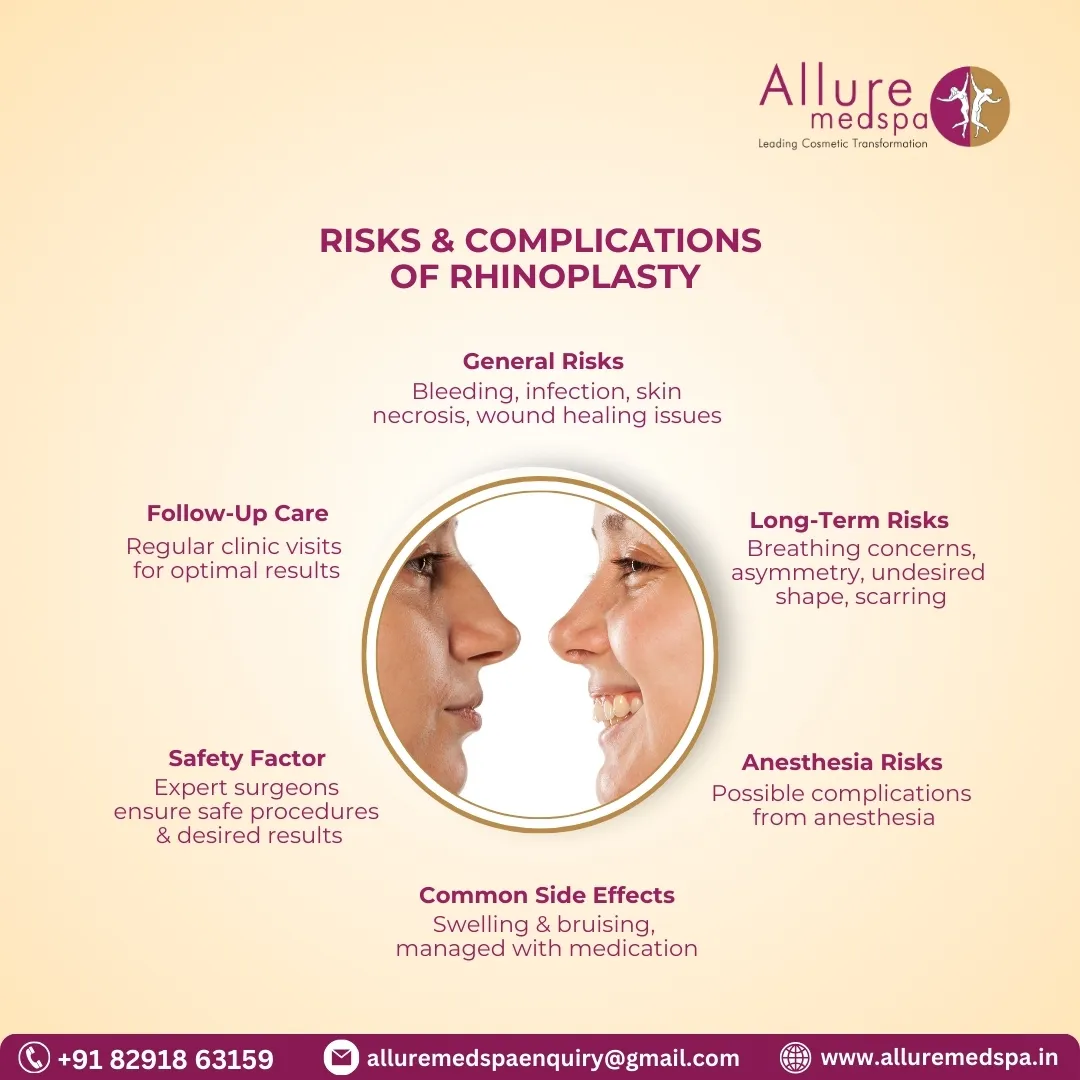
Rare Anesthesia-Related Risks
- Adverse reaction to general or local anesthesia
- Nausea, vomiting, or temporary confusion post-op
How to Minimize Risks
- Choose a board-certified rhinoplasty surgeon with extensive experience
- Ensure surgery is performed in an accredited cosmetic surgery center
- Follow all pre-op and post-op care instructions
- Attend all scheduled follow-up appointments
With proper care and an expert surgeon, most patients recover safely and achieve their desired results.
How Long Does It Take to Recover from Rhinoplasty Surgery?
Most patients recover from rhinoplasty within 7–10 days for daily activities, but full results may take up to 6–12 months to refine completely.
Rhinoplasty Recovery Timeline:
- Day 1–3: Mild discomfort like a cold, managed with pain medication and ice packs.
- Week 1: Bruising and swelling peak and begin to subside. External splint and stitches are removed between day 5–7.
- Day 7–10: You can usually resume office work and fly back if traveling from out of town.
- Week 2–4: Most visible swelling fades; light activities are allowed.
- Month 1: 70–80% of the swelling resolves. Your new nose shape begins to settle.
- Months 6–12: Final nose contour and tip definition become visible.
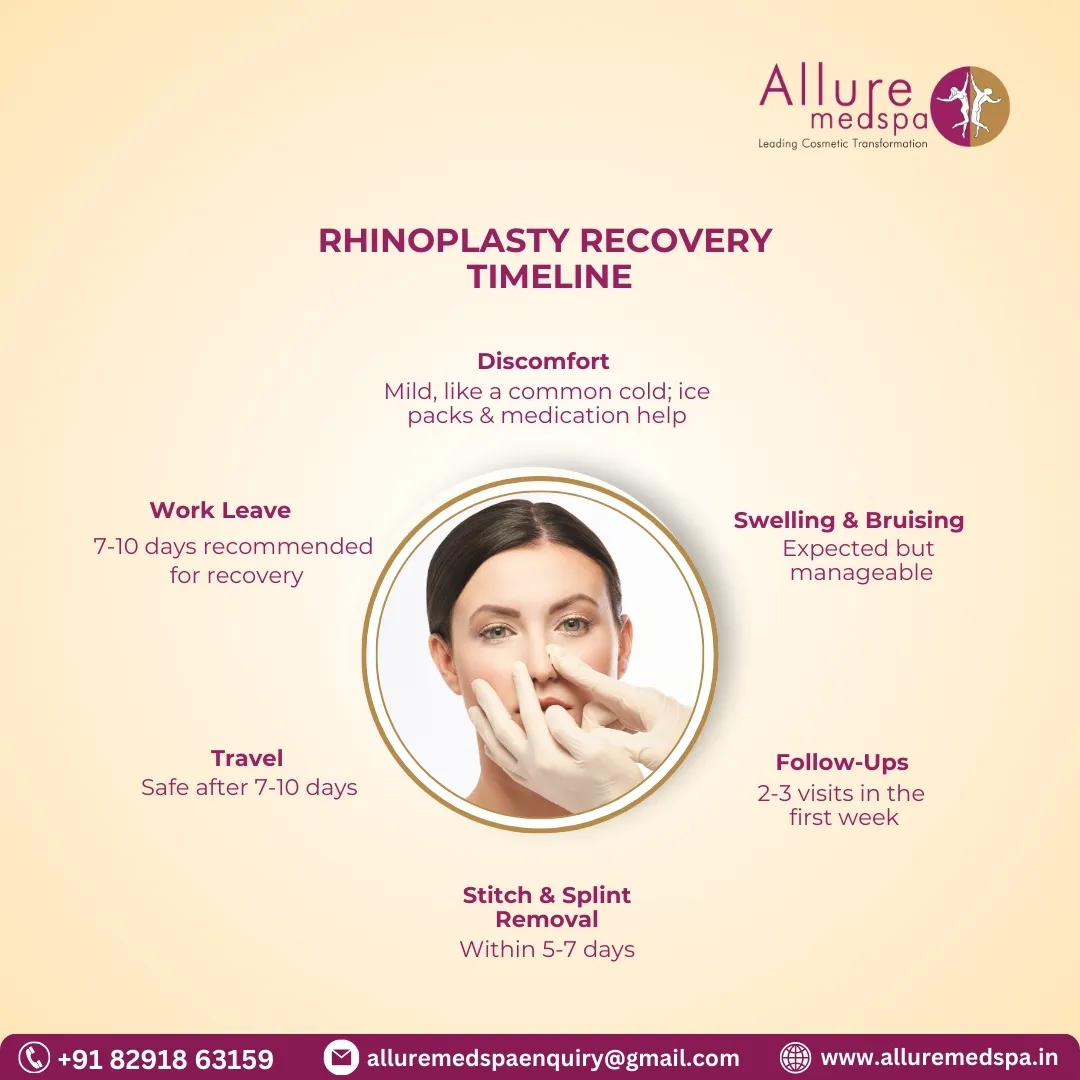
Follow-Up Visits:
- Visit your clinic 2–3 times during the first week for splint checks and guidance.
- Scheduled follow-ups at 1 month, 3 months, and 6 months post-op are important for best results.
Following your surgeon’s aftercare advice and attending follow-ups ensures a smoother and safer recovery journey.
Who Is the Best Cosmetic Surgeon for Facelift Surgery in Mumbai, India?
Dr. Milan Doshi is a board-certified plastic surgeon in Mumbai with 26+ years of experience and 1,500+ rhinoplasty surgeries to his credit.
Why Dr. Milan Doshi Is Recognized as Mumbai’s Leading Rhinoplasty Expert:
- Indian board-certified plastic cosmetic surgeon with over 25 years of experience.
- Performed 1,250+ successful rhinoplasty surgeries, including primary, revision, and ethnic nose jobs.
- Member of ASPS, ISAPS, APSI, IAAPS, and Rhinoplasty Society of India.
- Mentor to 80+ plastic surgeons across India, certified by ISAPS for training and mentorship.
- Invited speaker at national and international conferences on nose reshaping surgery.
- Trusted for revision rhinoplasty and complicated nasal deformity corrections.

- Known for performing ethnic rhinoplasties tailored to individual facial harmony.
- Highly preferred by Bollywood celebrities for consistent, natural-looking results.
- Treated patients from over 50+ countries at Allure Medspa, Mumbai.
Whether it’s a primary nose job or complex revision, Dr. Doshi’s experience and artistry make him one of India’s most sought-after rhinoplasty surgeons.
Which Is the Best Rhinoplasty Surgery Center in Mumbai, India?
Allure Medspa offers advanced rhinoplasty in Mumbai with expert care, 3D consultations, NABH certification, and facilities trusted by 50+ countries.
Why Allure Medspa Is the Best Rhinoplasty Center in Mumbai:
- Two centers: Andheri (for consultations & non-surgical rhinoplasty) and Goregaon (for surgical procedures).
- Goregaon center is ISO 9000:2008 and NABH certified for highest quality and safety standards.
- 3D virtual consultations available—see potential results before surgery from the comfort of your home.
- Modern OT setup, real-time monitoring, ETO sterilization, autoclaving, and strict hygiene protocols.
- Personalized rhinoplasty plans based on individual goals, anatomy, and expectations.
- Overnight indoor stay available—rooms equipped with microwave, fridge, LCD TV, and attached bathroom.
- Privacy and confidentiality are our top priorities throughout your rhinoplasty journey.
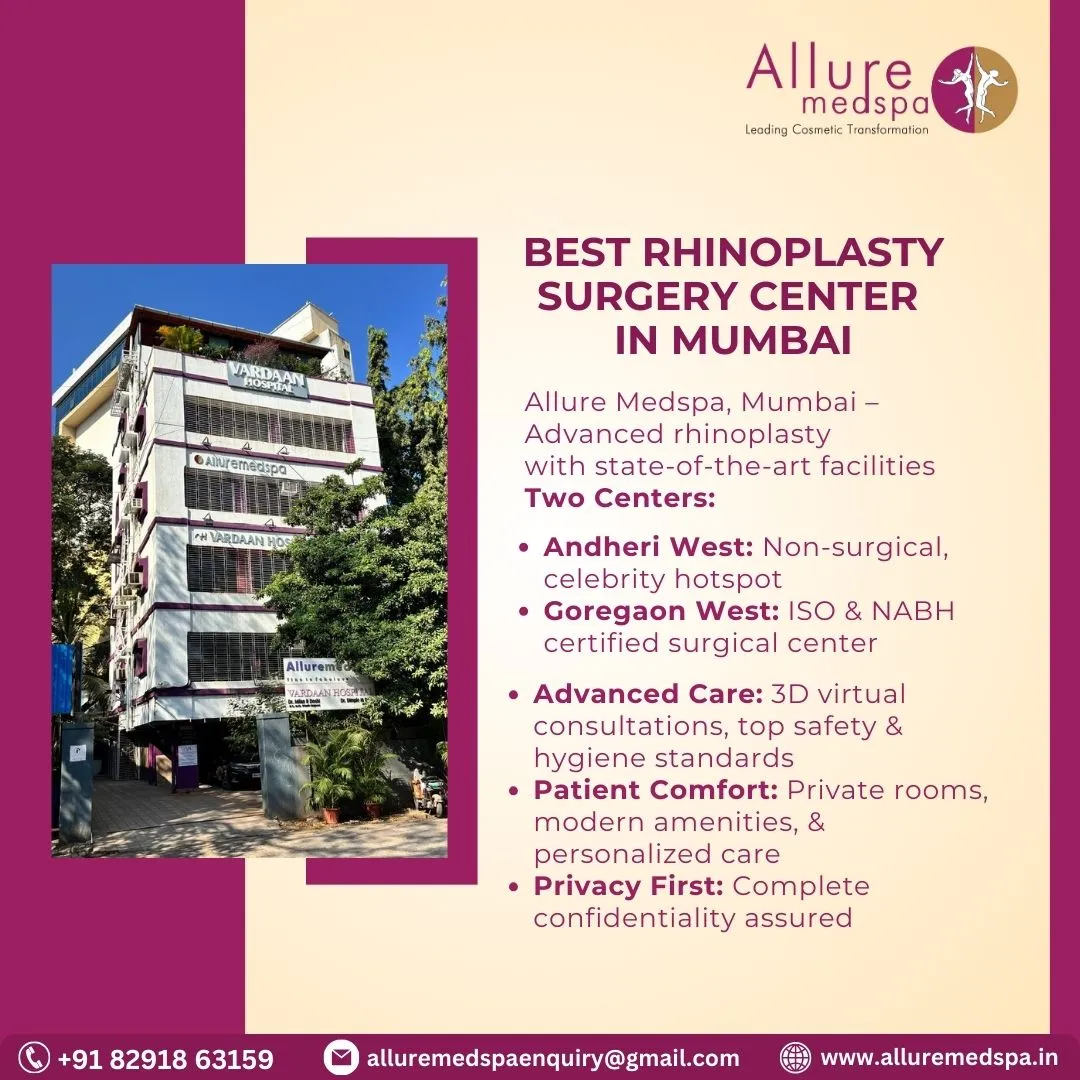
- Special facilitation programs for outstation and international patients, including visa and travel support.
- Comfortable post-op recovery with a team trained in rhinoplasty-specific patient care and recovery protocols.
Allure Medspa is where surgical precision meets patient comfort, making your transformation from fine to fabulous a smooth, safe, and satisfying experience.
What Is the Cost of Rhinoplasty Surgery in Mumbai, India?
Rhinoplasty surgery at Allure Medspa, Mumbai ranges from ₹1,00,000 to ₹2,50,000 depending on the type and complexity of the procedure.
Rhinoplasty Surgery Cost at Allure Medspa:
| Types | Cost (INR) |
|---|---|
| Primary Rhinoplasty | ₹1,00,000 – ₹2,00,000 |
| Secondary/Revision Rhinoplasty | ₹1,50,000 – ₹2,50,000 |
| Nasal Implant (if needed) | ₹15,000 – ₹20,000 |
| Endonasal Surgery (if needed) | ₹40,000 – ₹80,000 |
Note: 18% GST applies on all cosmetic surgery fees as per Government of India regulations. EMI options are available.
What’s Included in the Rhinoplasty Cost?
- Surgeon’s fee
- Anaesthetist’s charges
- All surgical medicines and consumables
- Hospital facility and stay
- Technology used (e.g., VASER, Piezo, etc.)
- Immediate post-operative follow-ups
Not Included in the Cost:
- Preoperative medical tests
- Post-op medications for home use
- Unforeseen complications or additional treatment
- Not covered by insurance (cosmetic procedure)
Factors That Influence Rhinoplasty Cost in India:
- Patient’s Profile: Nose structure, breathing issues, skin type, goals.
- Surgeon’s Experience: Board-certified, ISAPS/ASPS memberships, patient reviews.
- Anaesthesiologist Expertise: Ensures safety and comfort during surgery.
- Clinic Infrastructure: NABH-accredited, advanced OT tech, sterilization protocols.
- Hospital Stay: Suite room, hygiene, staff support.
- Follow-up Visits: Additional appointments may affect final cost.
Transparent pricing, expert hands, and personalized care—Allure Medspa ensures value and safety in every rhinoplasty journey.
“Want to know the exact cost for you?”
(FAQ's) Frequently Asked Question of Rhinoplasty Surgery?
Q1. What is rhinoplasty?
Rhinoplasty is a surgery that reshapes the nose to harmonize with facial features while addressing functional or cosmetic concerns. It may involve modifying bone, cartilage, or skin.
Q2. What happens 10 years after rhinoplasty?
A well-performed rhinoplasty yields permanent results, but natural aging can still affect nose appearance over time. Follow-up with your surgeon helps maintain long-term outcomes.
Q3. Is rhinoplasty 100% safe?
While no surgery is 100% risk-free, rhinoplasty is generally safe when performed by a qualified, experienced surgeon in a certified surgical center.
Q4. How painful is rhinoplasty?
The procedure itself is painless due to anesthesia. Post-operative discomfort is common but manageable with prescribed medication.
Q5. What is the best age to get a nose job?
Rhinoplasty is usually performed after facial growth is complete—around age 16 for girls and 18 for boys. Adults can undergo surgery at any age if they are healthy.
Q6. Can I fix my nose without surgery?
Non-surgical rhinoplasty using dermal fillers can temporarily correct minor nose imperfections but cannot address functional issues or major structural concerns.
Q7. Does rhinoplasty leave scars?
Most incisions are made inside the nostrils (closed rhinoplasty), leaving no visible scars. Open rhinoplasty leaves a minimal scar on the columella, which fades over time.
Q8. Is rhinoplasty permanent?
Yes, the structural changes achieved during rhinoplasty are permanent. However, aging and trauma can affect the nose’s appearance over time.
Q9. What are the risks or side effects of rhinoplasty?
Potential risks include bleeding, infection, swelling, numbness, asymmetry, breathing issues, or dissatisfaction with results. These are rare with skilled surgeons.
Q10. Does rhinoplasty change your face?
Yes, a nose job can subtly alter your facial proportions, often enhancing overall symmetry and balance, making your features appear more refined.
Q11. How much does rhinoplasty cost in India?
The average cost of rhinoplasty in India ranges from ₹80,000 to ₹2,50,000 depending on the complexity, surgeon’s expertise, and hospital setup.
Q12. Is rhinoplasty covered by insurance?
Insurance may cover rhinoplasty if it addresses breathing problems or trauma-related deformities. Purely cosmetic procedures are typically not covered.
Q13. Is rhinoplasty safe in India?
Yes, India has many skilled, board-certified cosmetic surgeons and NABH-accredited centers ensuring international standards of safety and hygiene.
Q14. What makes rhinoplasty expensive?
Factors include the surgeon’s experience, type of rhinoplasty (primary, revision, open, closed), anesthesia, hospital quality, and post-op care.
Q15. Can exercise change nose shape?
No, exercise cannot alter the shape of nasal bone or cartilage. Cosmetic reshaping requires medical or surgical intervention.
Q16. How long does a nose job last?
Results from a surgical nose job are generally permanent, but natural aging may lead to subtle changes over time.
Q17. Is it haram to get a rhinoplasty?
Islamic scholars have varying views. If done for correcting a deformity or improving breathing, it’s often considered permissible. For purely cosmetic reasons, personal intention and religious consultation matter.
Q18. Why does my nose hurt 3 months after rhinoplasty?
Minor residual swelling or internal healing can cause sensitivity even after 3 months. If persistent or painful, consult your surgeon.
Q19. Which country is best for rhinoplasty?
Countries like India, South Korea, Turkey and the USA are known for high-quality rhinoplasty with skilled surgeons and cost-effective options.
Q20. Is rhinoplasty a good idea?
Yes, if you have realistic expectations and select an experienced, certified surgeon, rhinoplasty can enhance appearance and improve function.
“Still have questions? We’re here. ”
Medical code for Rhinoplasty Surgery
CPT Code and Description about Rhinoplasty Surgery:
| CPT Code | CPT Description | ICD-10 Procedure |
|---|---|---|
| 30400 | Lateral and Alar Cartilages / Elevation of Nasal Tip | Z41.1 |
| 30410 | Septal Repair | Z41.1 |
| 30420 | Major Septal Repair | Z41.1 |
| 30430 | Minor Revision | Z41.1 |
| 30450 | Major Revision | Z41.1 |
“Our Holistic Care for Outstation Patients”
Related Links
- Non-Surgical Rhinoplasty
- Rhinoplasty Surgery Cost
- Rhinoplasty Surgery Before After Images
Note: The author of this content is Dr. Milan Doshi, An Indian board-certified plastic & cosmetic Surgeon wholly & solely confirms the authenticity of the information & knowledge delivered by this write-up.
